A Complete Guide to Churn Prevention: 14 Strategies to Reduce Customer Churn
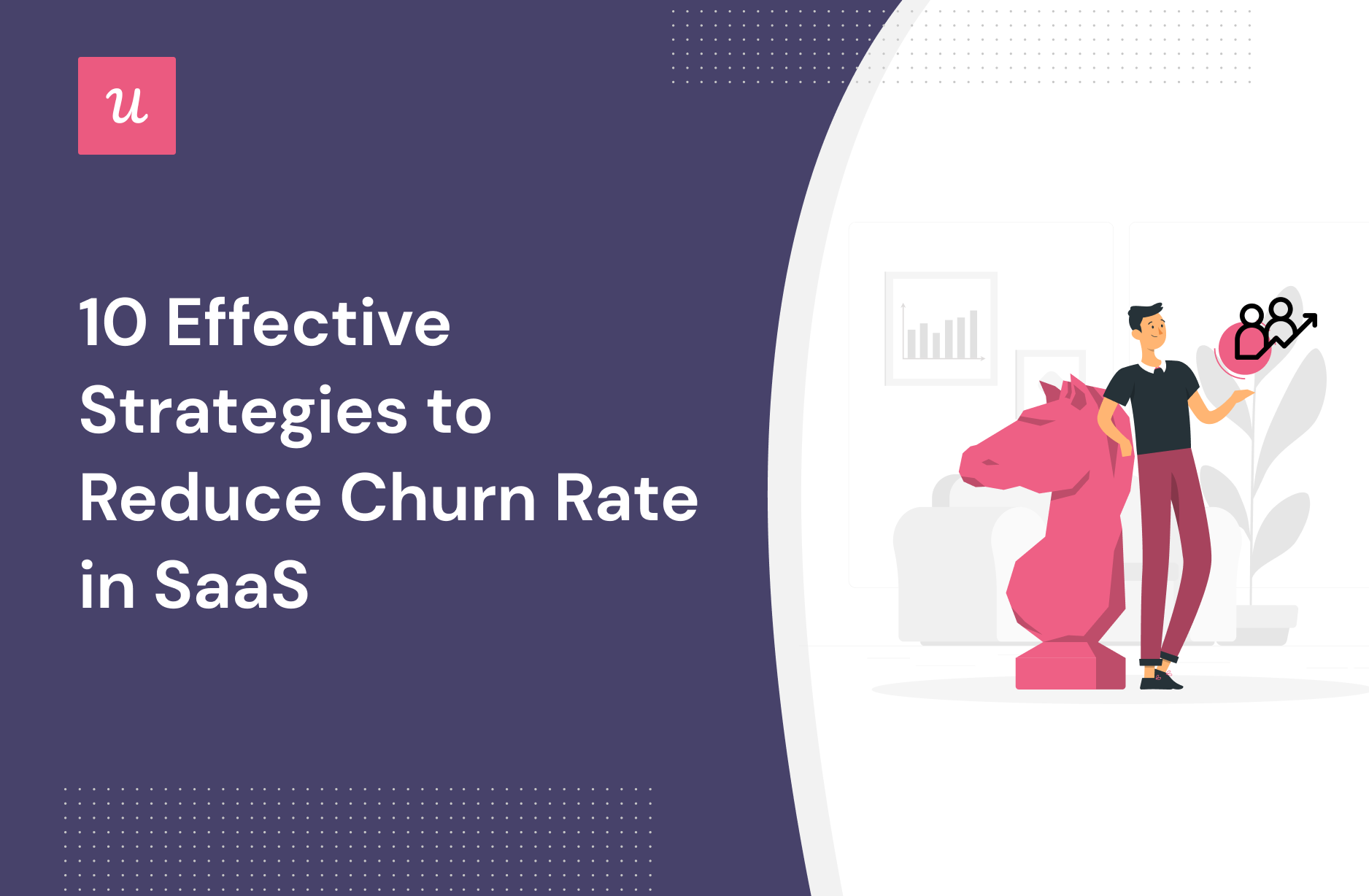
Are you struggling to retain customers for long? The churn prevention strategies discussed in this article will help with your retention strategy.
In addition, you’ll also learn how to calculate the churn rate for your SaaS and see the three main reasons why SaaS customers stop interacting with your product and what you can do to prevent that.
TL;DR
- A churn happens when a customer stops using a company’s products or services after a certain period of time.
- There are two types of churn you should be tracking: User/customer churn and net MRR churn as one tracks the number of users you are losing and the other, the impact that has on your revenue.
- Churn prevention is all about creating strategies to proactively reduce customer churn.
- Reducing customer churn will reduce the LTV: CAC ratio for your SaaS, making you gain more from each acquired customer.
- Three main reasons for churn: lack of product-market fit, product pricing, and bad product experiences.
- PMF surveys help you determine if you’ve reached product-market fit. A score of 40% and above shows you’re there.
- Examine your best users. Notice the features they use the most and what their personas have in common, then use this information to draft your ideal customer profiles and the features that will appeal to them the most.
- Checklists, modals, and interactive walkthroughs help you guide new users through your product and reduce churn.
- User satisfaction and sentiment surveys (like NPS) are effective for revealing what customers think about your tool and areas that you need to work on.
- Don’t just lose trial users like that. Send reminders when their trial is almost over and offer incentives to upgrade or help if needed.
- Send re-engagement emails to your inactive users to find out why they’re lagging and offer incentives to resume using your product.
- In-app resource centers help improve the user experience which in turn increases the likelihood of customers sticking with your tool.
- Exit surveys are great for finding out why customers are leaving your tool. The survey is also your last opportunity to gain the user back by offering alternatives to canceling the account.
- Looking to engage your users in-app and prevent churn by helping users get value out of your product? Get a Userpilot demo and see how in-app experiences can help with churn prevention.
![]()
Try Userpilot for your churn prevention efforts

What is customer churn prevention?
Customer churn refers to the percentage of current customers who stop using a company’s products or services after a certain period of time.
Customer churn prevention involves building customer loyalty by coming up with proactive strategies to keep customers for as long as possible. Executed well, a churn prevention strategy will increase the lifetime of customers, marginally reducing customer churn rates.
How do you calculate churn?
While churn applies to other businesses, this article is particular about the SaaS industry. That said, let’s consider how to calculate churn for SaaS.
There are essentially two types of churn and you should be tracking both:
- User/customer churn: Measured by how many customers you lose over a specific period. This is calculated by dividing the number of customers lost by the number of customers you had at the start of the period. Multiply that figure by 100 to get the customer churn rate.
Let’s imagine you had 1200 paying customers in Feb 2022, but that number was reduced to 1,000 in March 2022 with no new customers added. It means you’ve lost 200 customers, hence your customer churn rate is 1200-1000/1200 * 100.
That’s 16.67% churn for the month.
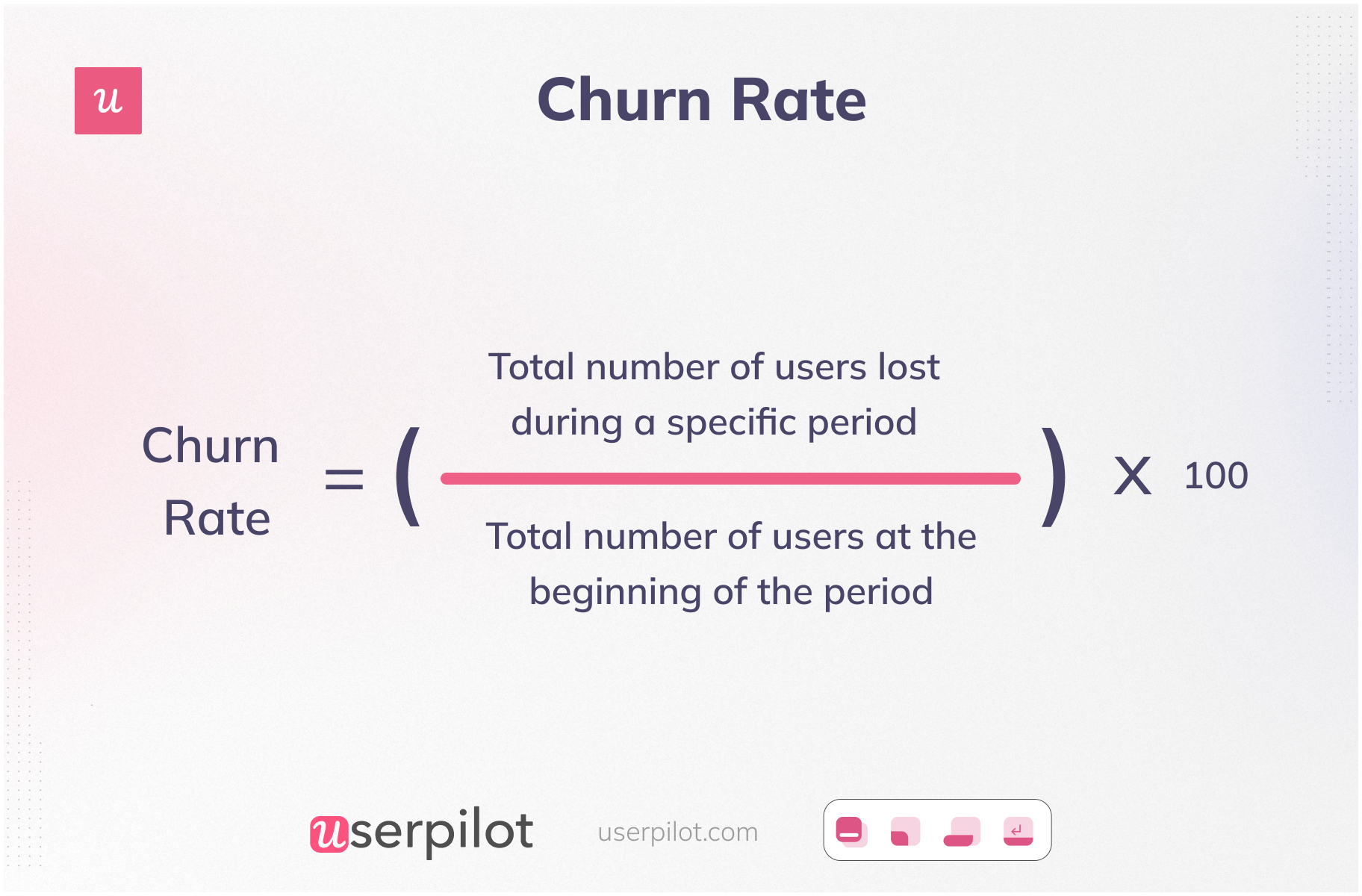
How to calculate customer churn rate
- Revenue churn: In SaaS, revenue churn is the amount of lost revenue over a given period. It can happen when users downgrade subscriptions or stop renewing them entirely.
To calculate your net revenue churn rate, you need to select a time frame first. For example, you might want to measure the revenue churn rate for a month or a year.
Next, measure the amount of revenue at the start of the period and the end of the period.
Then, you need to divide the net revenue lost in that period by the total revenue at the beginning of the period.
For example, at the beginning of January 2021, your MRR was $55,000. By the end of December 2021, it dropped to $48,500. So, your revenue churn for one year is (6,500/55,000) * 100 = 11.82%.
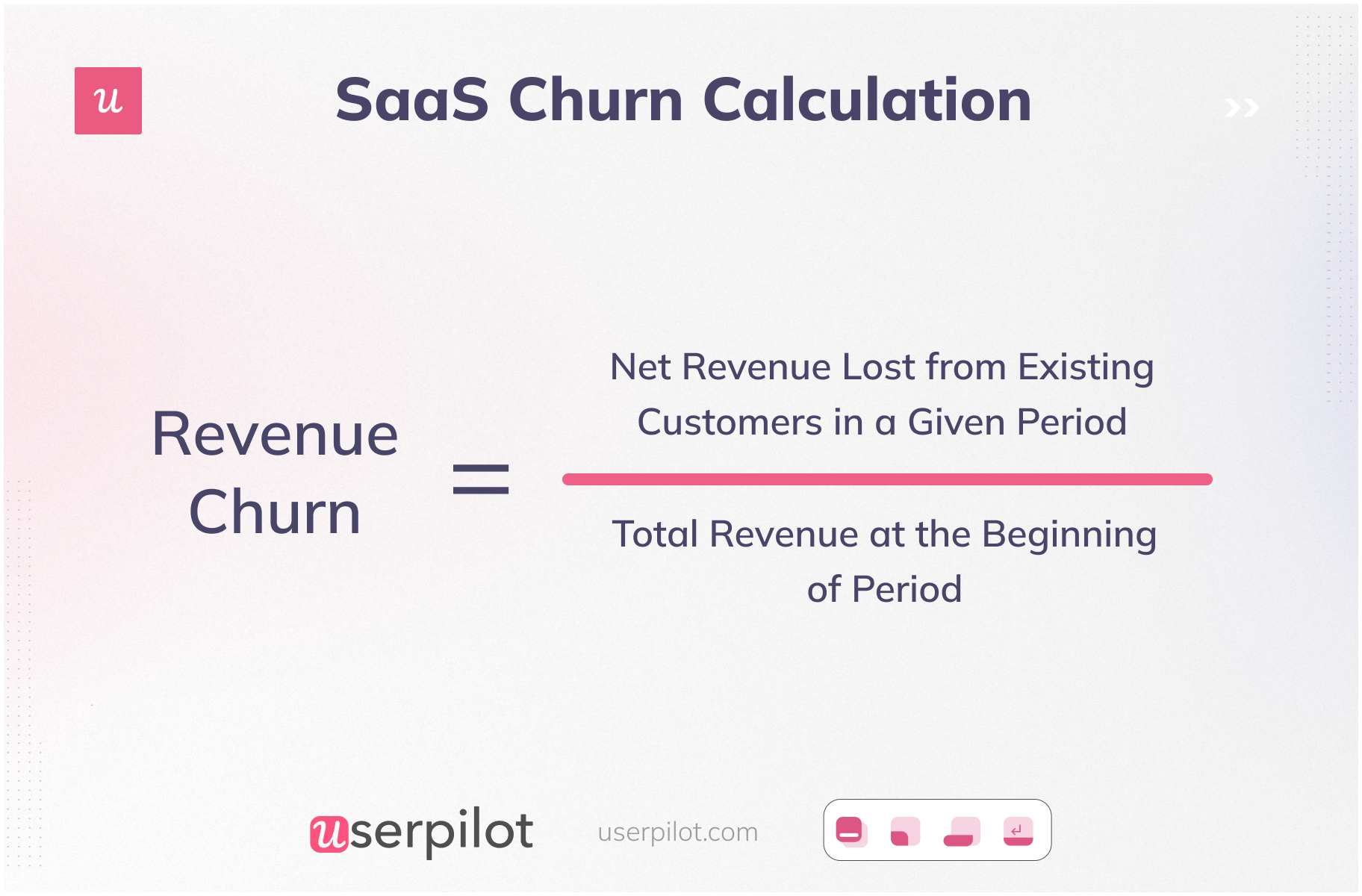
How to calculate SaaS revenue churn
The difference between customer churn and revenue churn is that the first one tells you about the number of customers you’ve lost in a specified period, while the latter gives you insight into how much revenue you’ve lost due to users leaving.
You can save yourself the headache of manual calculation by using analytics tools that track these.
Churn prevention vs churn reduction: What is the difference?
Churn prevention is proactive, while churn reduction is reactive. The former involves considering the factors that lead to churn and addressing them before they come up.
The latter is about reacting to churn; it’s the action you take after customers have started leaving.
Since every company experiences churn at a level, it means SaaS companies will always need both approaches.
Why is customer churn prevention important?
Here are a few major reasons why you should work on reducing customer attrition and churn rate:
- Higher profits: SaaS companies rely on monthly or annual recurring revenue to stay afloat, hence the need to always reconcile the customer acquisition cost with a good LTV. Moreover, the cost of retaining existing customers is less than the acquisition costs to gain new ones.
- Improve customer satisfaction among existing customers: Higher customer satisfaction means customers are happy with your product or service. People who stay longer with your company do so because you’re treating them well. These people won’t have a problem spreading the word about you.
- Increase customer loyalty: Another added advantage is the increase in the number of loyal customers.
- Increase customer retention rates: When churn is prevented, more customers will be retained for the long term, increasing LTV. This will greatly impact the company’s net revenue.
Main reasons behind customer churn
Customers churn when a product doesn’t deliver the expected experience. Specifically, here are the three main reasons behind customer attrition.
Lack of product-market fit
To achieve PMF, you need to begin by deciding what your product does and defining the target market. Next, research the market to know what functionalities they need and the product experiences they crave, then deliver these and more.
For instance, if you’re building an email automation tool, you need to make sure your users can store and update their email list, create and customize emails, schedule emails, and access basic data. These are essential functionalities that your ideal users will expect.
They will churn when your product doesn’t provide these, at least, because that will mean it can’t help get their job done.
Bad customer experience
The user experience plays a huge role in how long a customer sticks with your tool.
Start optimizing this from the first encounter users have with your product because the first-time experience is where customers size up your tool to determine if it will help them or not.
What you can do: Make the product intuitive, provide proper in-app guidance, and cut out any friction points.
Price
It is not uncommon for salespeople and customer success teams to object to the price.
Customers may churn if they find a more cost-effective solution to their problem.
So it’s critical to establish value and educate your customers so they feel the purchase is worth it.
14 proven customer retention strategies to reduce customer churn rate
A churn prevention strategy is all about being proactive in preventing churn and making sure users continuously experience value. Here are the main tactics you can apply.
![]()
Implement these churn prevention strategies with Userpilot

1. Personalize the onboarding process for new customers
Nailing the onboarding process is a crucial customer retention strategy. Personalized onboarding ensures each user learns how your SaaS product serves their unique, individual needs.
For example, a UX designer may have a different set of goals for an onboarding tool than a product manager using the same tool.
To successfully personalize each user’s onboarding flow and customer experience, you must first understand their needs. Use a welcome survey to learn about your users and their JTBD and place them in the appropriate segment.
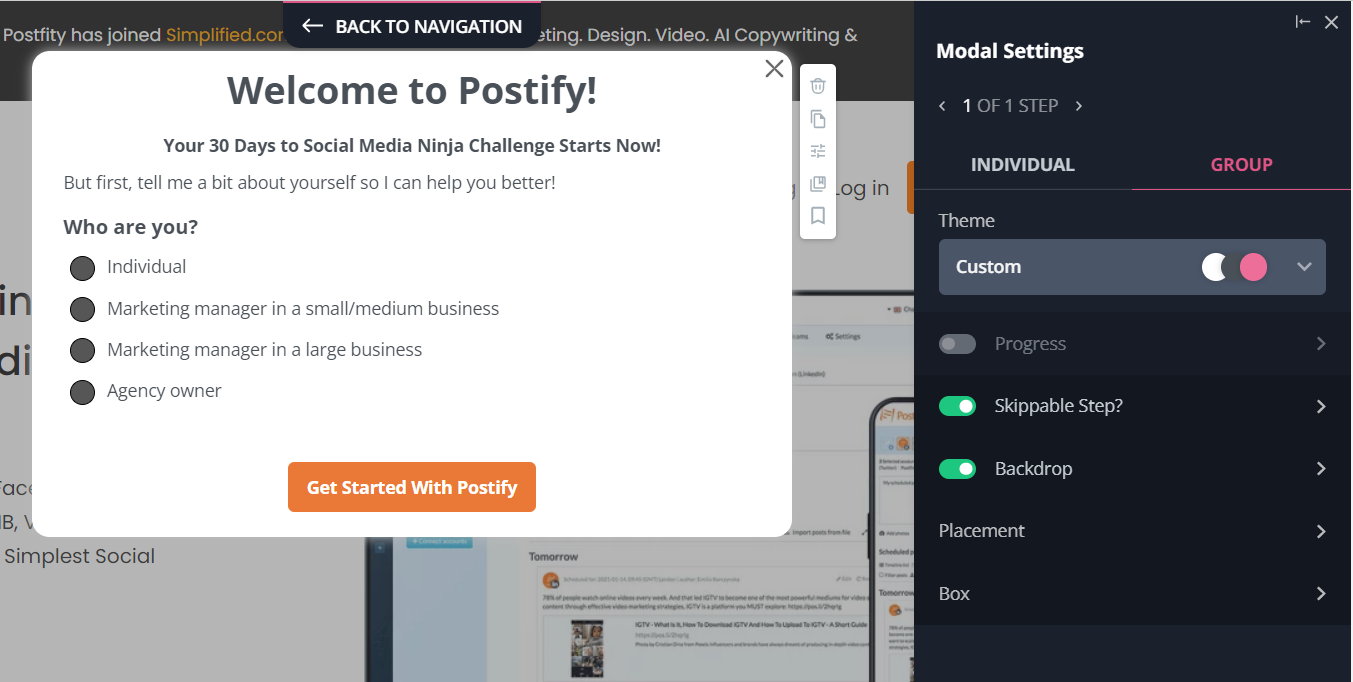
Use a welcome survey to learn about your users
Finally, display the onboarding flow specific to their JTBD segment. This personalized onboarding flow should showcase features necessary for the user to achieve their goals with your product.

Create a personalized onboarding flow for different segments
2. Decrease time to value with onboarding checklists
Now that you have the data, use different checklists for each user segment to ensure they engage with the key features relevant to their need. Your goal here is to help them reach the activation point quickly.

Build onboarding checklists code-free with Userpilot.
3. Increase customer engagement with in-app guidance
Don’t walk users through your tool with bland product tours. You’ll lose their attention along the way.
Instead, use the checklists mentioned above to prompt the user to engage with specific features. But don’t just tell them – show them how to do it.
How?
Use interactive walkthroughs to guide them step-by-step through engaging with a feature for the first time. This will help new customers adopt your product and minimize customer churn risk.
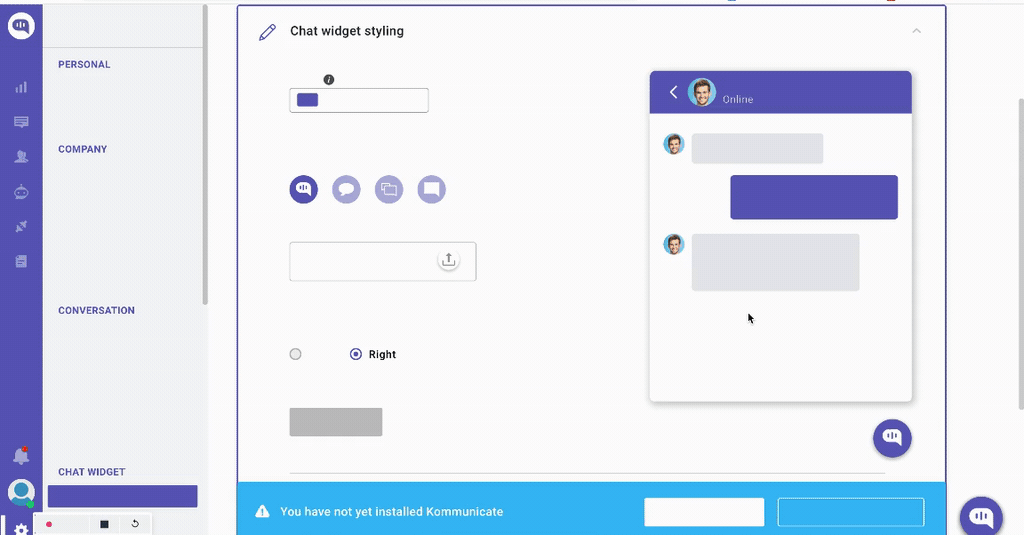
Use interactive walkthroughs to guide users step-by-step
4. Understand what’s driving value from existing customers
Segment and analyze the behavior of your high-value customers. Seek to understand what your most valuable customers love about your app, what makes customers happy, the features they engage with the most, and how often. After, duplicate their customer journey for new users to prevent churn.
You can track user behavior with feature tagging and predict what features your profitable customers may find valuable in the future based on their current needs.
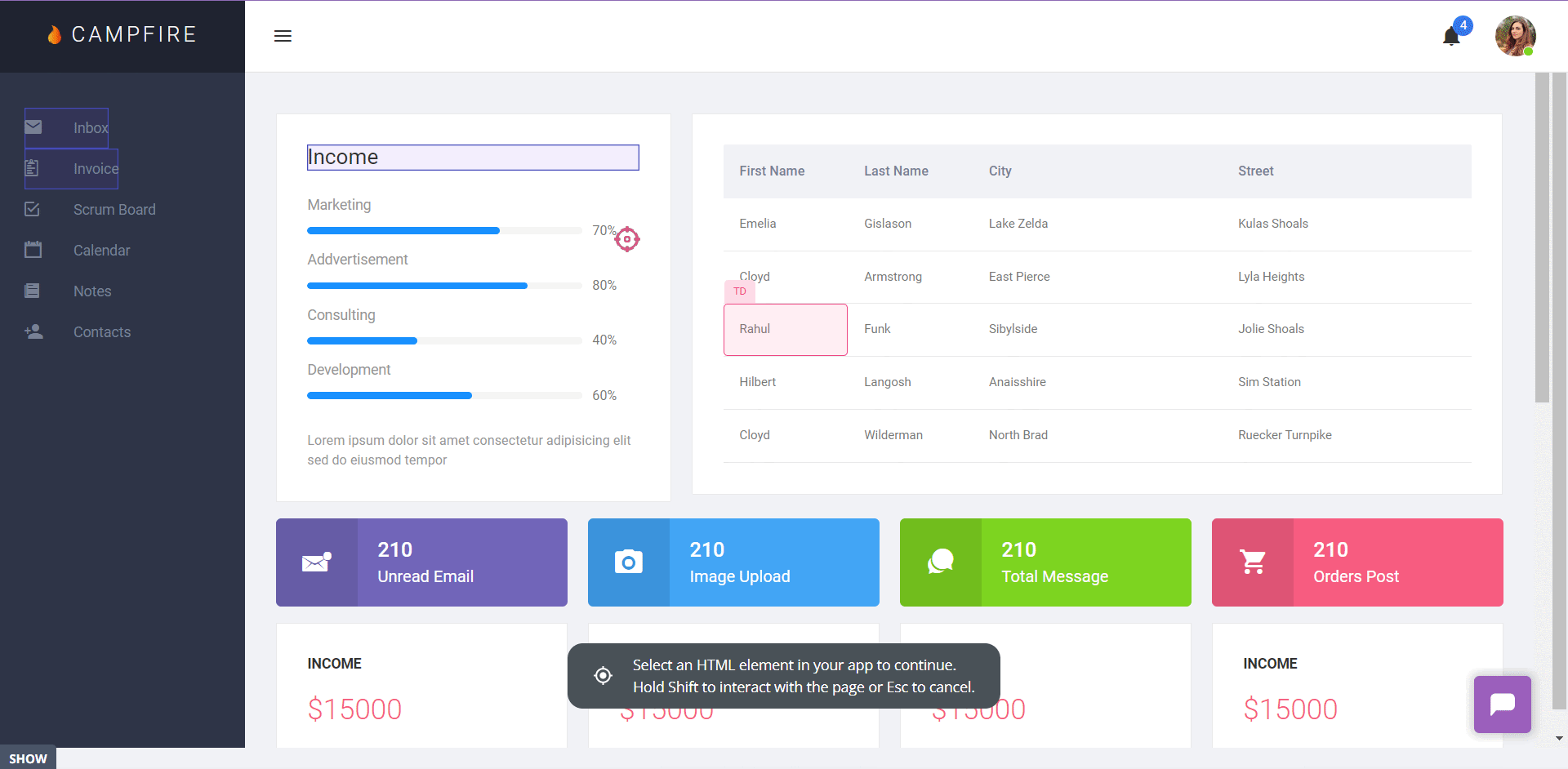
Track user behavior with feature tagging
5. Provide proactive customer service to prevent customer churn
Self-service support is the preferred customer service method. Nobody wants to wait in line with support or customer success agents for simple questions.
Build an in-app resource center and add multiple helpful resources to help users fast when they get stuck.
Your resource center should include multiple resources such as video tutorials, webinar recordings, knowledge base articles, etc. to prevent customer churn.
This will significantly improve the overall user experience.

Build resource center code-free with Userpilot.
6. Increase customer lifetime value by delivering consistent value
In order to keep your existing customers engaged, you need to provide consistent value during each stage of their customer lifecycle. One way to do so is to add new features that will help them better meet their goals.
As users get used to using your product in a certain way, there’s a high chance that they’ll miss it when you roll out new features.
Don’t rely on hope to discover your feature upgrades and new releases. It’s your job to announce what’s new in the first place.
Use tooltips, banners, and modals to point out the new feature and prompt users to engage with them. Who knows, the new feature might be exactly why some users will stick to your product.
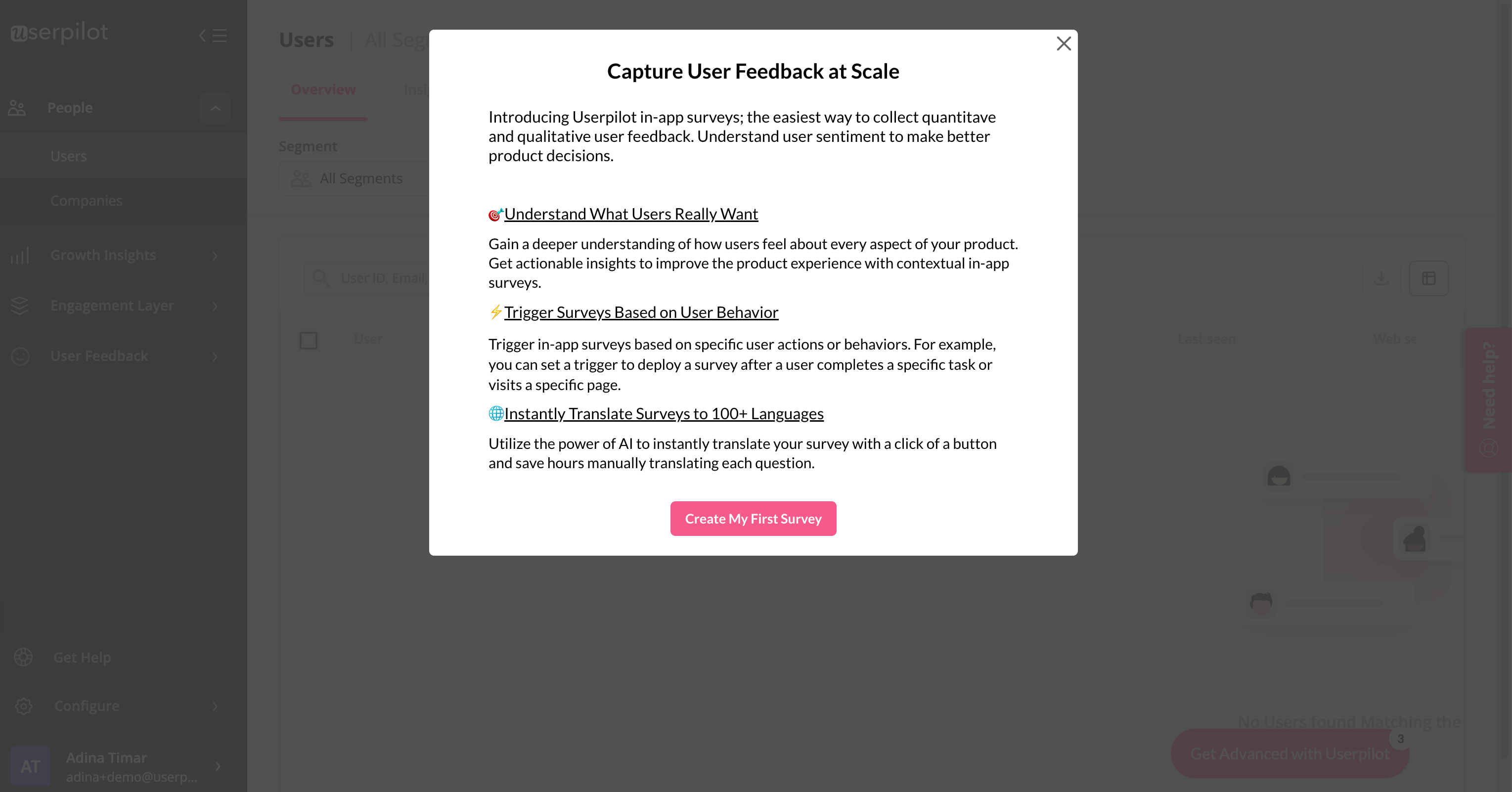
Use modals to point out the new feature and prompt users to engage with them.
7. Exceed customer expectations by educating your existing customers on your product and industry
Webinars can help reduce the time it takes to educate your customers on how to use your product. It provides a format that can deep dive into a certain feature and its different use cases.
Check-in with your customer success team to create a path to success. Go one step further and take a look at your analytics to see what features users have failed to adopt and send specific webinars that will help them successfully adopt that certain feature.
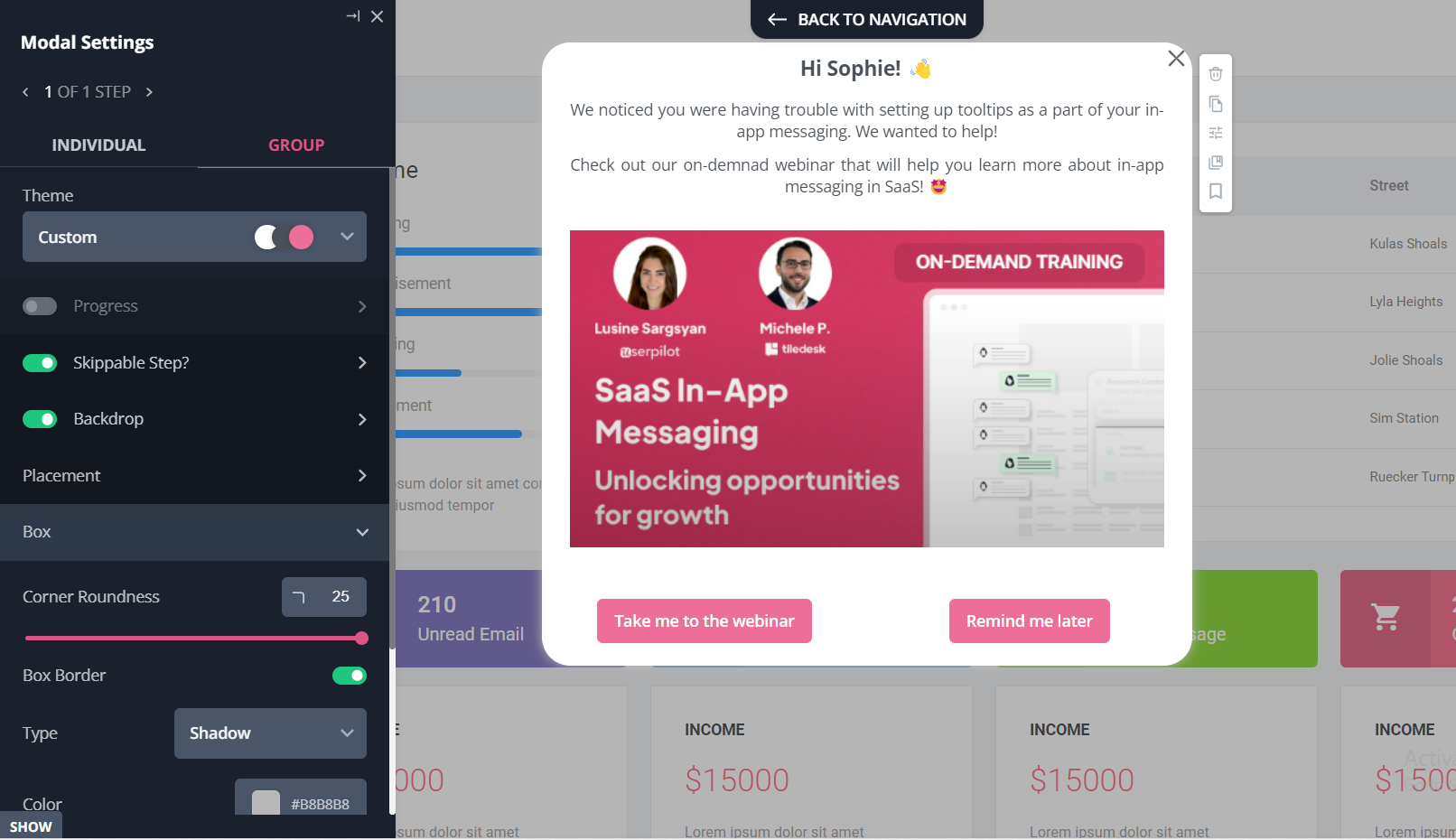
Webinars can help reduce the time it takes to educate your customers on how to use your product.
8. Collect customer feedback at different stages of the customer journey to improve customer experience
One of the only clear ways of knowing how well your customers are performing and identifying churn early on is to collect feedback directly from your customers.
With this feedback, you can determine what’s working and what isn’t so you can make improvements.
You can use in-app surveys triggered at certain points through the user journey to collect contextual feedback and know when your existing customer churn prevention strategy needs improving.
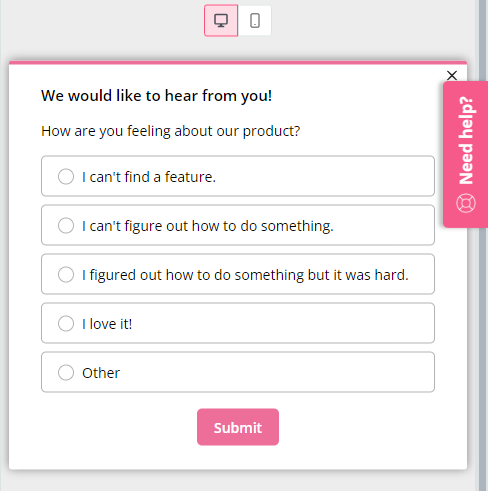
Create in-app surveys code-free with Userpilot
9. Measure customer satisfaction and customer loyalty with NPS surveys to identify at-risk customers
NPS surveys use a 10-point scale to ask users how likely they are to recommend your product. This is usually followed by a qualitative question to know the reason for the chosen score.
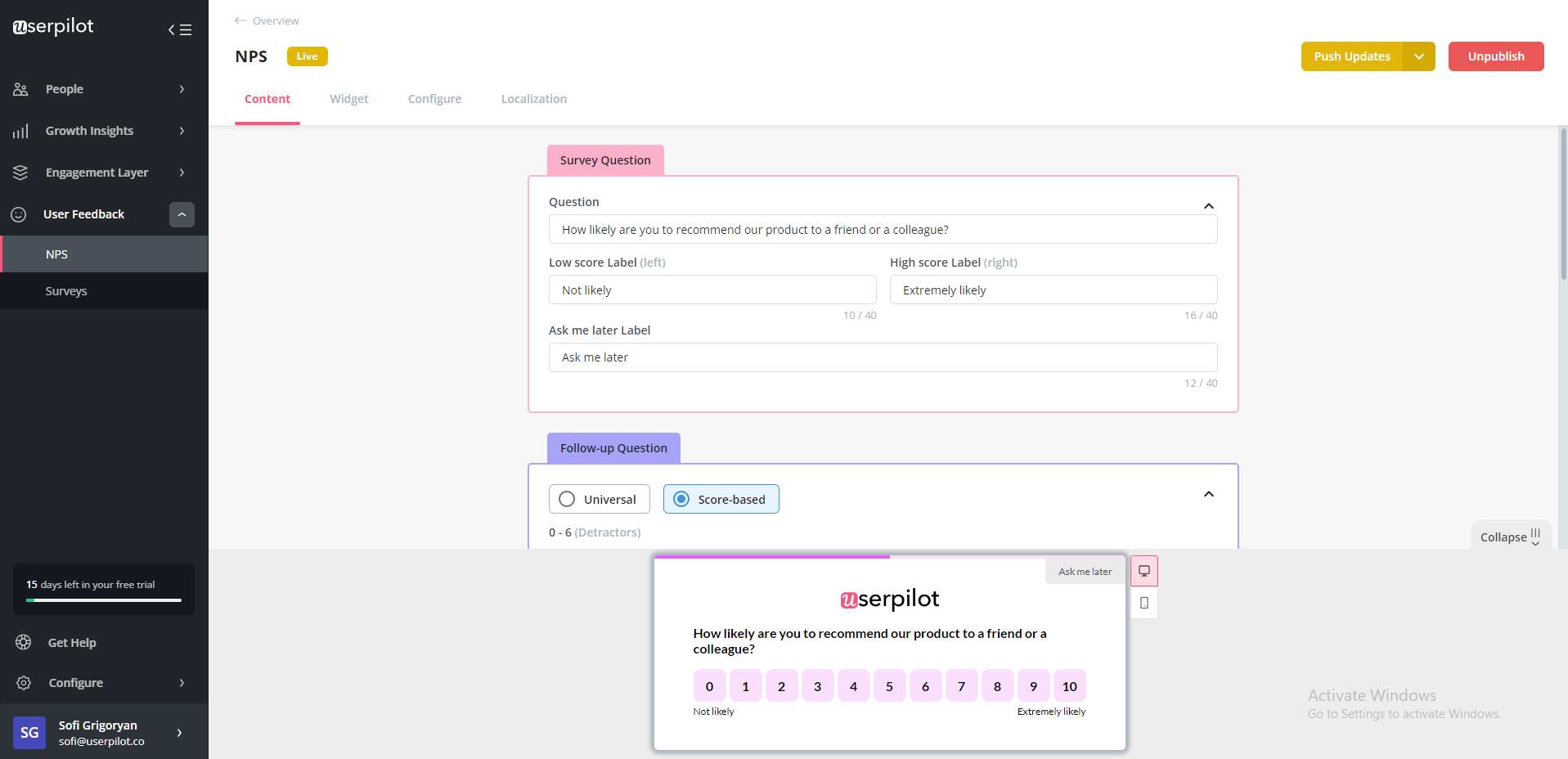
Create NPS surveys code-free with Userpilot
Together, these quantitative and qualitative questions will reveal user sentiment and provide insights for your next course of action.
With Userpilot, you can tag NPS responses and check for patterns that are causing low NPS scores, keep an eye on detractors, and work on minimizing their number.
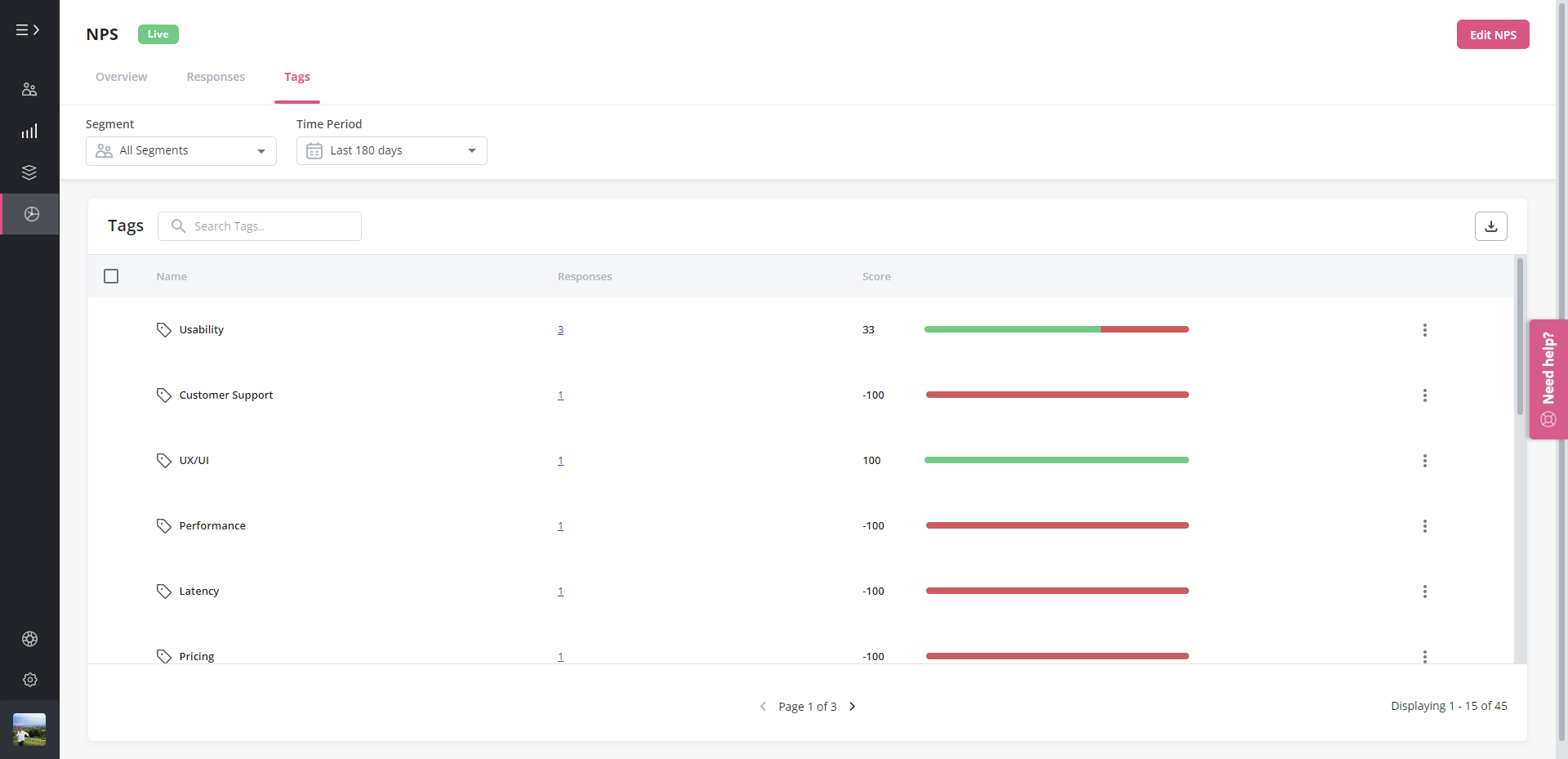
NPS response tagging in Userpilot
Proactively work on the provided “reasons” for customer dissatisfaction to improve customer loyalty.
10. Create an online community to improve customer relationships
When you create a community, customers tend to stay more loyal and it will reduce the likelihood that they’ll churn when something goes wrong.
Some examples of these channels could be emails, Facebook groups, help centers, in-app messaging, or live chat. You should unify these channels in an omnichannel support tool to manage them effectively.
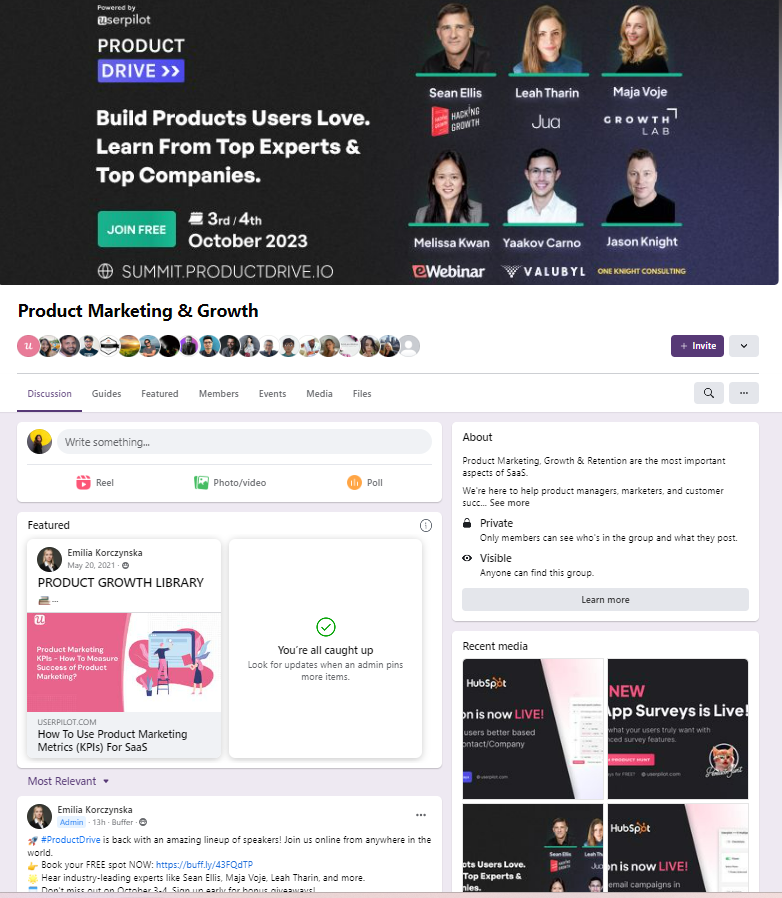
Join our Facebook community to get the latest in product marketing and growth.
11. Monitor product analytics to predict customer churn
When you complete a customer churn analysis, you find out why customers churn by measuring and interpreting customer data yourself. You also determine what to do to retain customers in the future.
You can predict churn by analyzing customer behavior, such as page views. Check for any noticeable spikes or dips in traffic and resolve any issues that come up.
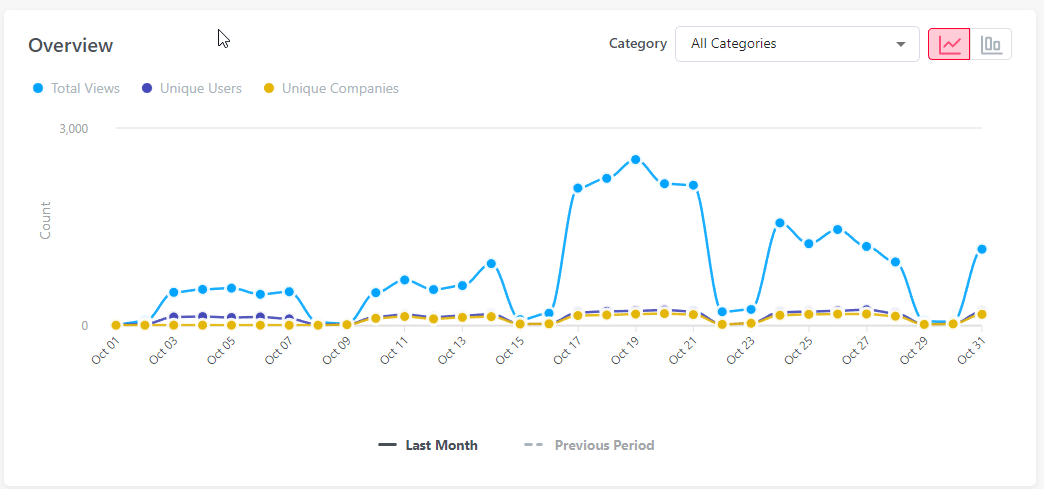
Analyze customer behavior to predict churn.
12. Use churn surveys to learn why customers churn
Conducting a churn survey allows you to access valuable feedback from customers, enabling you to proactively address issues, increase customer retention, and automate personalized in-app responses to potentially reduce customer churn rate.
Moreover, a churn survey can help you gather the type of customer feedback that you won’t access, for example, from your happiest users or the net promoter score (NPS) that measures customer loyalty.
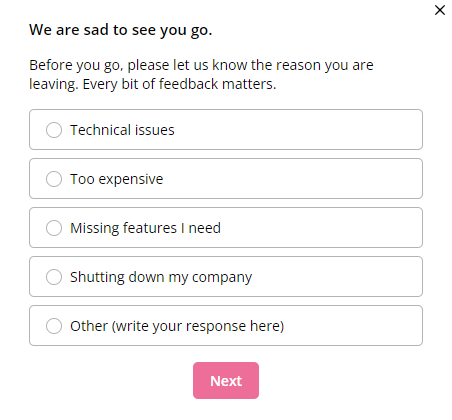
Build churn surveys code-free with Userpilot.
Your main goal here should be to understand the reasons behind the user’s decision to cancel (or downgrade) the subscription so you can act on it.
For example, if most of the users and customers leave, because of your product’s price, it might mean a few things:
- You should reconsider your pricing.
- You are attracting the wrong audience.
- Your users don’t see the value in your product (you might have an onboarding problem here).
![]()
Learn how to build churn surveys code-free with Userpilot

13. Reduce churn by offering alternatives
Many customers that cancel their subscriptions actually like your platform. They’re just dissatisfied with some aspects of your product or service.
By offering personalized cancellation alternatives, you’ll win some of them over.
Consider the following example from Asana.
The company triggers a churn survey with predefined answers.

Asana churn survey
And offers compelling alternatives based on a user’s response. In this case, the user said money is the issue, so Asana offers a cheaper plan:

Reduce churn by offering alternatives
14. Send win-back emails to churned customers
If some users want to cancel because some particular feature is missing, you can ask them for permission to keep them updated about new features.
Your product might not be enough right now but leaving an open door is always best and gives you a chance of continuing the conversation.
The feature they’re missing might be on your next release so you might even be able to convince them to stay.
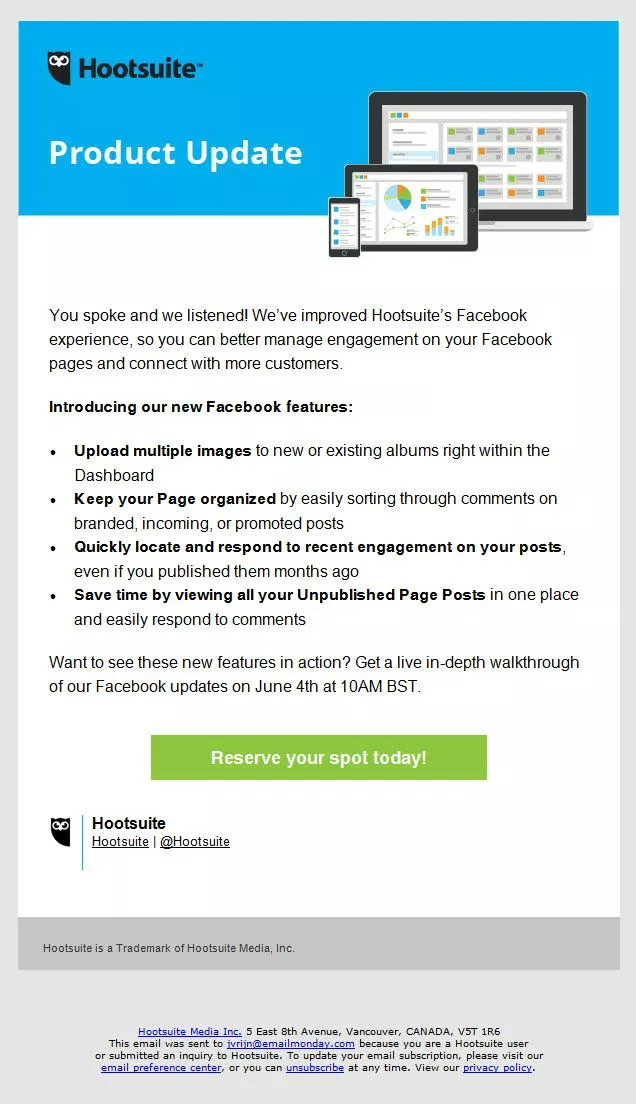
Send win-back emails to churned customers
Conclusion
Churn is a problem that all SaaS businesses deal with at different levels. As seen in this article, there are two ways to approach churn: be proactive or reactive.
It’s best to be both. The proactive approach will help you prevent customer churn before it happens, while the latter will be reserved for when customers churn nonetheless, indicating the need to change methods.
We’ve discussed 14 proactive methods for reducing churn, go ahead and implement the strategies that stood out to you.
You can also get a demo today to see how Userpilot can help with your churn prevention strategies.
![]()
Improve your churn prevention strategies with Userpilot


